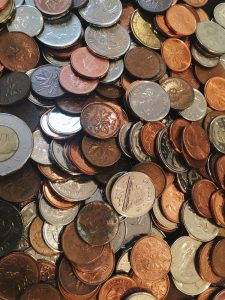Forex trading is one of the most popular investment options available today. It involves buying and selling currency pairs in the hope of making a profit. The movement of currency pairs can be quite unpredictable, and traders need to have a good understanding of how to gauge a pair’s day movement to make informed decisions.
Gauging a pair’s day movement involves analyzing various factors that can impact currency prices. Some of these factors include economic indicators, central bank policies, geopolitical events, and market sentiment. By understanding these factors and how they affect currency prices, traders can make informed decisions about when to buy or sell a particular currency pair.
One of the most important factors to consider when gauging a pair’s day movement is economic indicators. These are statistics that provide information about a country’s economic performance. Common economic indicators include Gross Domestic Product (GDP), inflation, unemployment, and retail sales. Traders should keep a close eye on these indicators to gauge the strength of a country’s economy and its currency.
Central bank policies are another important factor to consider when gauging a pair’s day movement. Central banks use various monetary policy tools to regulate the money supply and influence interest rates. These policies can have a significant impact on currency prices. For example, if a central bank raises interest rates, it can attract foreign investment and increase demand for the currency, leading to an increase in its value.
Geopolitical events also have a significant impact on currency prices. Political instability, wars, and trade disputes can all cause volatility in the forex market. For example, if there is a major political crisis in a country, investors may lose confidence in its economy and sell off its currency, leading to a decline in value.
Market sentiment is another factor to consider when gauging a pair’s day movement. This refers to the overall mood of traders and investors in the market. If sentiment is positive, investors may be more willing to take risks and invest in higher-yielding currencies. On the other hand, if sentiment is negative, investors may be more cautious and seek safe-haven currencies like the US dollar or Japanese yen.
Once traders have analyzed these factors, they can use various technical analysis tools to identify trends and patterns in currency prices. Technical analysis involves using charts and indicators to identify price movements and potential trading opportunities. Some common technical indicators include moving averages, RSI, MACD, and Fibonacci retracements.
In addition to technical analysis, traders should also pay attention to market news and events. News can have a significant impact on currency prices, and traders need to stay up to date on the latest developments. This can involve following news outlets, attending conferences and seminars, and participating in online forums and discussion groups.
In conclusion, gauging a pair’s day movement in forex trading involves analyzing various factors that can impact currency prices. Traders need to have a good understanding of economic indicators, central bank policies, geopolitical events, and market sentiment. They should also use technical analysis tools to identify trends and patterns in currency prices and stay up to date on the latest news and events. By doing so, traders can make informed decisions about when to buy or sell a particular currency pair and maximize their chances of making a profit.





